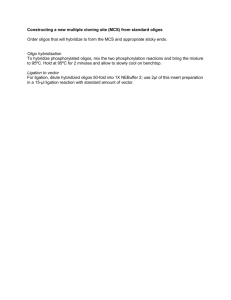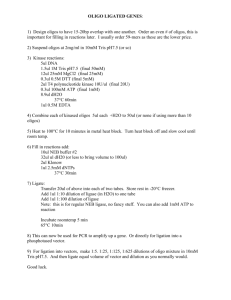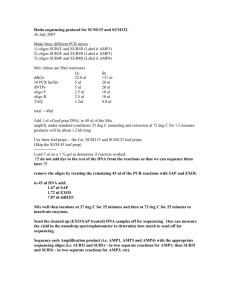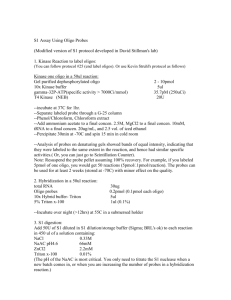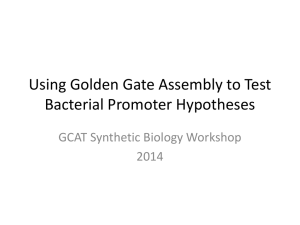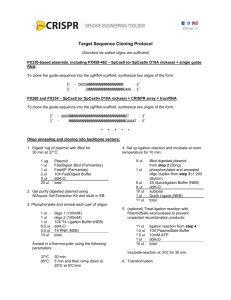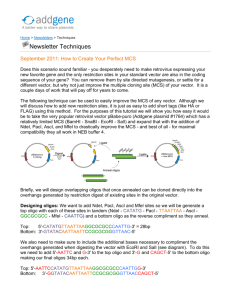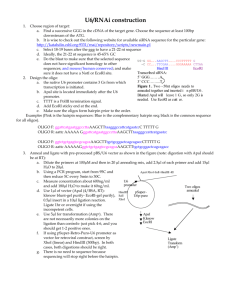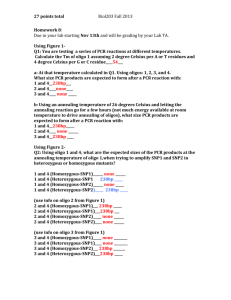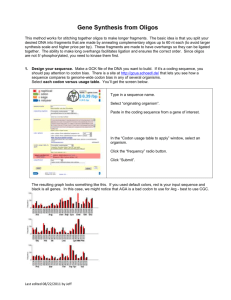Oligonucleotide phosphorylation and annealing Oligonucleotides
advertisement
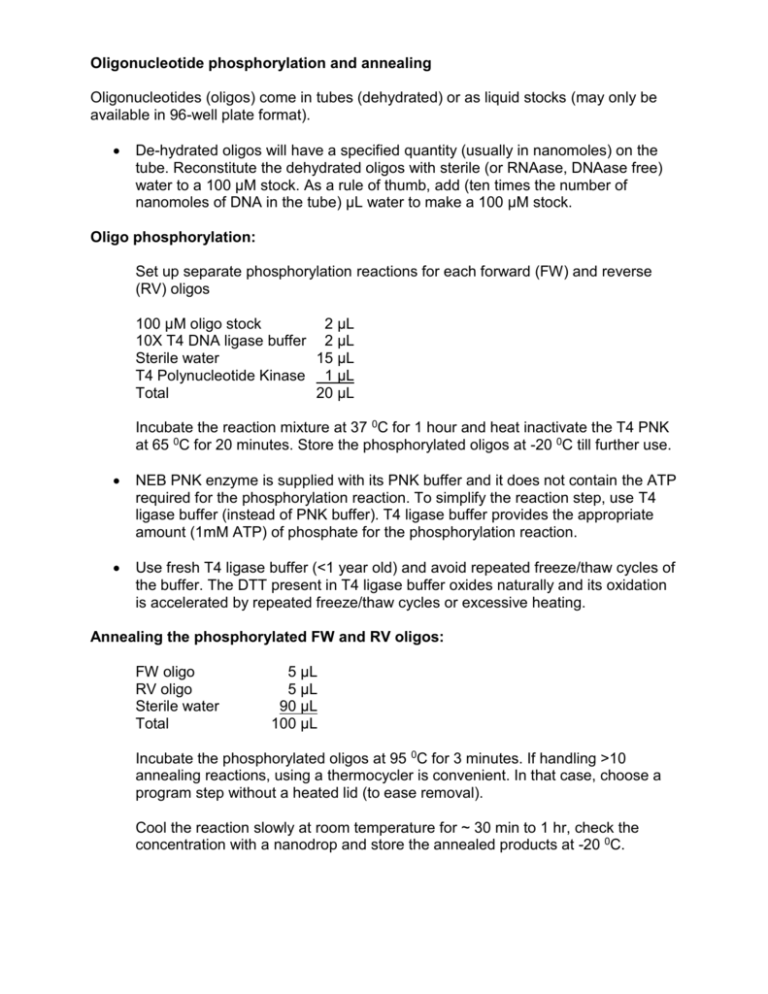
Oligonucleotide phosphorylation and annealing Oligonucleotides (oligos) come in tubes (dehydrated) or as liquid stocks (may only be available in 96-well plate format). De-hydrated oligos will have a specified quantity (usually in nanomoles) on the tube. Reconstitute the dehydrated oligos with sterile (or RNAase, DNAase free) water to a 100 µM stock. As a rule of thumb, add (ten times the number of nanomoles of DNA in the tube) µL water to make a 100 µM stock. Oligo phosphorylation: Set up separate phosphorylation reactions for each forward (FW) and reverse (RV) oligos 100 µM oligo stock 2 µL 10X T4 DNA ligase buffer 2 µL Sterile water 15 µL T4 Polynucleotide Kinase 1 µL Total 20 µL Incubate the reaction mixture at 37 0C for 1 hour and heat inactivate the T4 PNK at 65 0C for 20 minutes. Store the phosphorylated oligos at -20 0C till further use. NEB PNK enzyme is supplied with its PNK buffer and it does not contain the ATP required for the phosphorylation reaction. To simplify the reaction step, use T4 ligase buffer (instead of PNK buffer). T4 ligase buffer provides the appropriate amount (1mM ATP) of phosphate for the phosphorylation reaction. Use fresh T4 ligase buffer (<1 year old) and avoid repeated freeze/thaw cycles of the buffer. The DTT present in T4 ligase buffer oxides naturally and its oxidation is accelerated by repeated freeze/thaw cycles or excessive heating. Annealing the phosphorylated FW and RV oligos: FW oligo RV oligo Sterile water Total 5 µL 5 µL 90 µL 100 µL Incubate the phosphorylated oligos at 95 0C for 3 minutes. If handling >10 annealing reactions, using a thermocycler is convenient. In that case, choose a program step without a heated lid (to ease removal). Cool the reaction slowly at room temperature for ~ 30 min to 1 hr, check the concentration with a nanodrop and store the annealed products at -20 0C.
